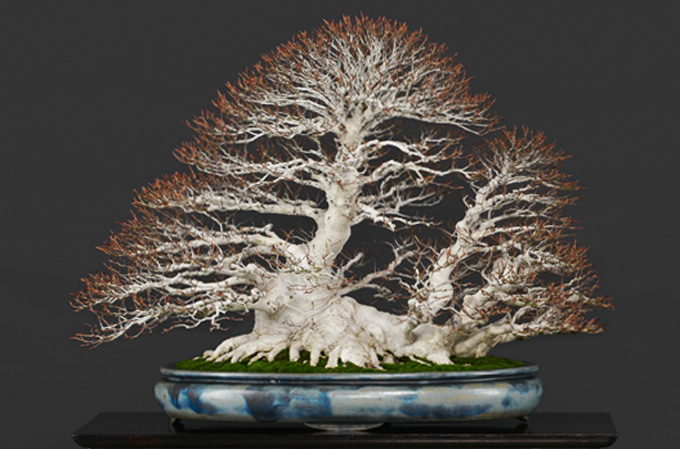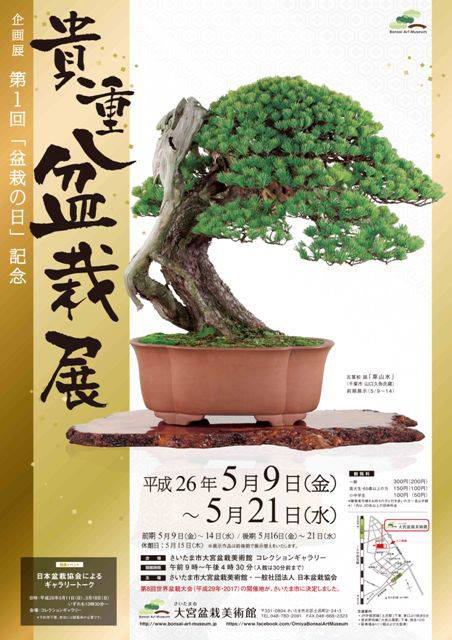 You have your own eyes so there’s no need for me to say much. Except to point out a couple little things, like the bright new rusty red buds and the daring glaze on the perfectly shaped pot that picks us the trunk color and contrasts with the buds. Another thing that distinguishes this bonsai is the amazingly fine ramification (fine branching). And then there’s the perfect mossing job. Photo is from the World Bonsai Friendship Federation.
You have your own eyes so there’s no need for me to say much. Except to point out a couple little things, like the bright new rusty red buds and the daring glaze on the perfectly shaped pot that picks us the trunk color and contrasts with the buds. Another thing that distinguishes this bonsai is the amazingly fine ramification (fine branching). And then there’s the perfect mossing job. Photo is from the World Bonsai Friendship Federation.
The one percent. I probably look at between fifty and hundred bonsai a day. Online. Some are pretty good and a few are very good. And then, every once and a while, a bonsai like this (above) comes along. It’s from the World Bonsai Friendship Federation. They don’t say who the artist is or name the species, though it looks so much like a Japanese beech, that I’d bet a week’s paltry pay on it. Meanwhile, I’ll wait for one of our enterprising readers to tell us the artist’s name (in fact, the first person to provide the name along with link for proof, will win a 25.00 gift certificate to Stone Lantern – just put your answer in the comments below).
 I found this poster on the World Bonsai Friendship Federation’s facebook feed. It’s for the upcoming World Bonsai Day (May 9 – 21, 2014) at The Omiya Bonsai Art Museum in Saitama, Japan.
I found this poster on the World Bonsai Friendship Federation’s facebook feed. It’s for the upcoming World Bonsai Day (May 9 – 21, 2014) at The Omiya Bonsai Art Museum in Saitama, Japan.
I think it’s a beech, raft style, from Andy Rutledge’s website http://bonsaijournal.com/worlds-2-deciduous.php . The photo is by Boon Manakitivipart but Andy doesn’t say who it belongs to either.
This Japanese beech, Fagus crenata, was displayed at the 88th Kokufu Bonsai Exhibition in Tokyo in February 2014. It was one of the few masterpieces which received the coveted Kokufu Prize in part 1 of two parts of the exhibition. I photographed it and posted the photo of the Japanese beech in my blog on February 5th. It can be seen at http://valavanisbonsaiblog.com/2014/02/
Bill
The beech is everything you said about it, but to me it looks too perfect, too artificial, too unnatural.
Hi Wayne
There always has to be one A ?
JC
The tree belongs to a famous customer here in Japan called Saito-San (if I remember correctly).
The maker of the tree is Oishi-San an Artist famous for his deciduous work and is part of the Daiju-en group. Oyakata say’s that tree isn’t one hundred percent sure but, believes the tree was originally an air-layer by Oishi-San, made over the past 40 years.
The pot used to belong to a customer of the Daiju-en group (Moriyama-San) and was also used in the previous Taikan-ten exhibition.
Hi John,
Congrats! You won. BTW everyone else: John sent me the link that absolutely establishes his answer via email.
That tree was originally an air layer and the right side of the raft nebari was originally a large branch. It was featured in a Bonsai Today magazine.
Hi Emmett,
Do you know which issue of BT?